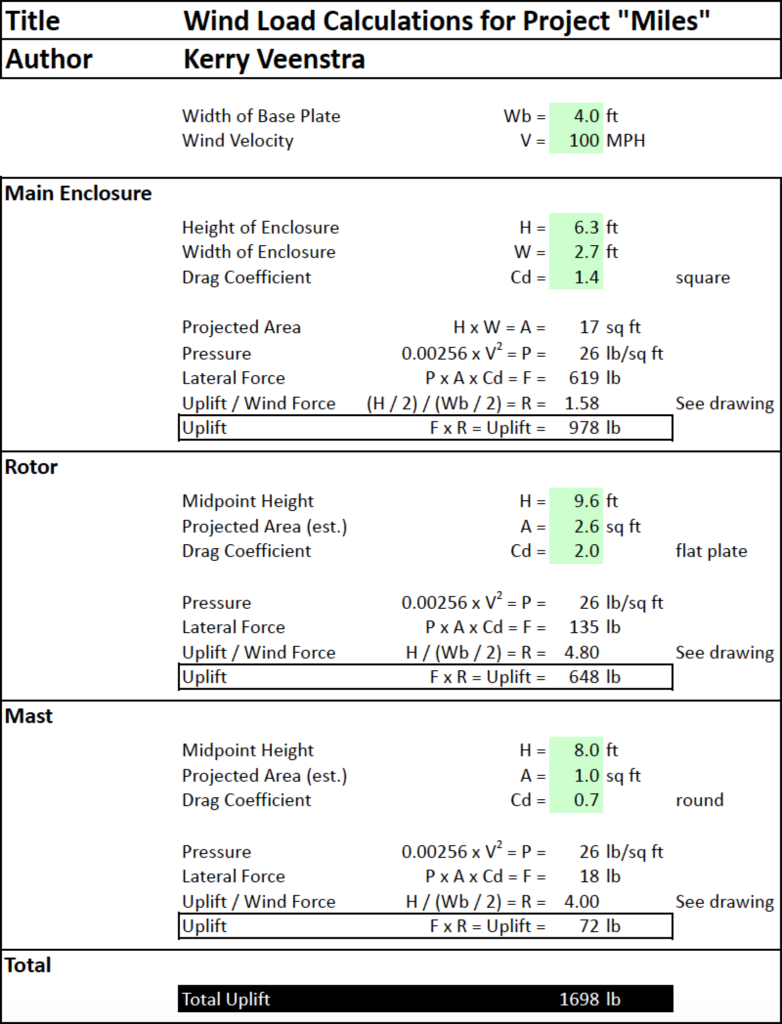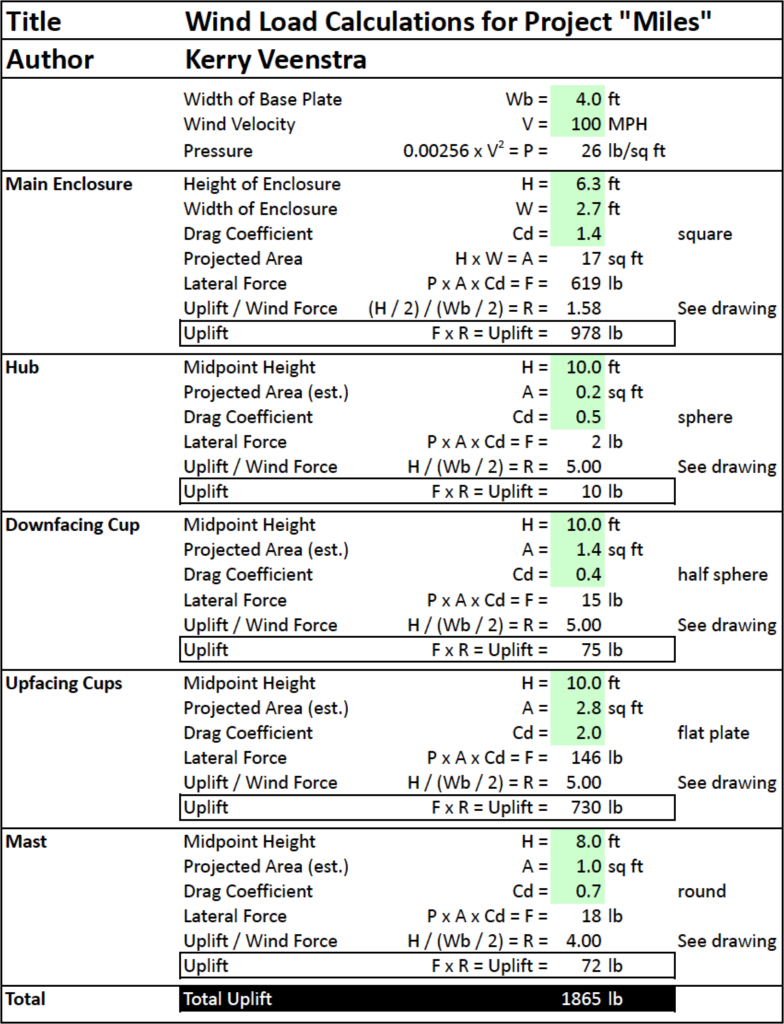Updated May 18, 2016: Use new rotor. See end of post.
Burning Man is a bit like an outdoor museum—a museum that can have highway-speed winds! Part of registering an art piece for display is determining the strength of hold downs required to ensure that the art does not tip over or blow away from the wind. The required calculations assume a wind speed of 100 MPH!
Miles uses a single earth anchor centered on its base. The geometry of the forces involved is somewhat like those seen when one uses a crowbar to remove a nail from a board: a horizontal force applied to the long end of the crowbar becomes a much larger uplift force which is applied to pull the nail. Since Miles is taller than it is wide, the situation is similar.
Horizontal Force
The force of the wind depends on the speed of the wind and the shape of the object that it blows against. The equations to use are:
WindPressure = 0.00256 × WindSpeed 2
and
Force = WindPressure × Area × DragCoefficient
With these equations Force is measured in pounds, Area is in square feet, WindPressure is in pounds per square foot, and WindSpeed is in MPH. The DragCoefficient is a unitless value which is selected from a table depending on the shape of the object.
Uplift Force Calculations
I’ve included the wind-load calculations in this drawing set and this Excel spreadsheet. For simplicity, I’ve performed separate calculations for three different parts of the art piece: Main Enclosure, Rotor, and Mast. The calculations reveal that the total uplift force that an earth anchor must withstand is 1,698 pounds (ignoring the weight of Miles itself). Since Burning Man can install 4-ft long screw-in type anchors with an approximate vertical load limit of 3,500 pounds, a single anchor is sufficient.
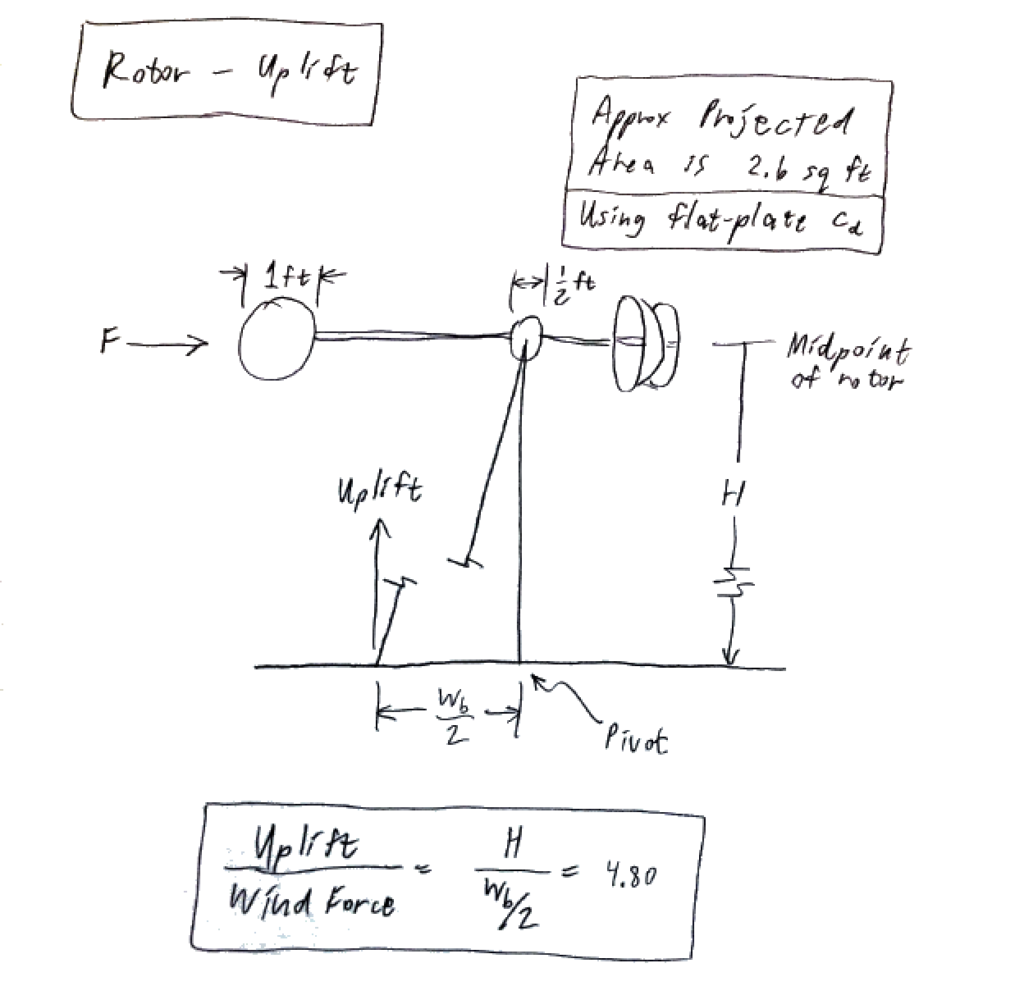
Rotor Uplift
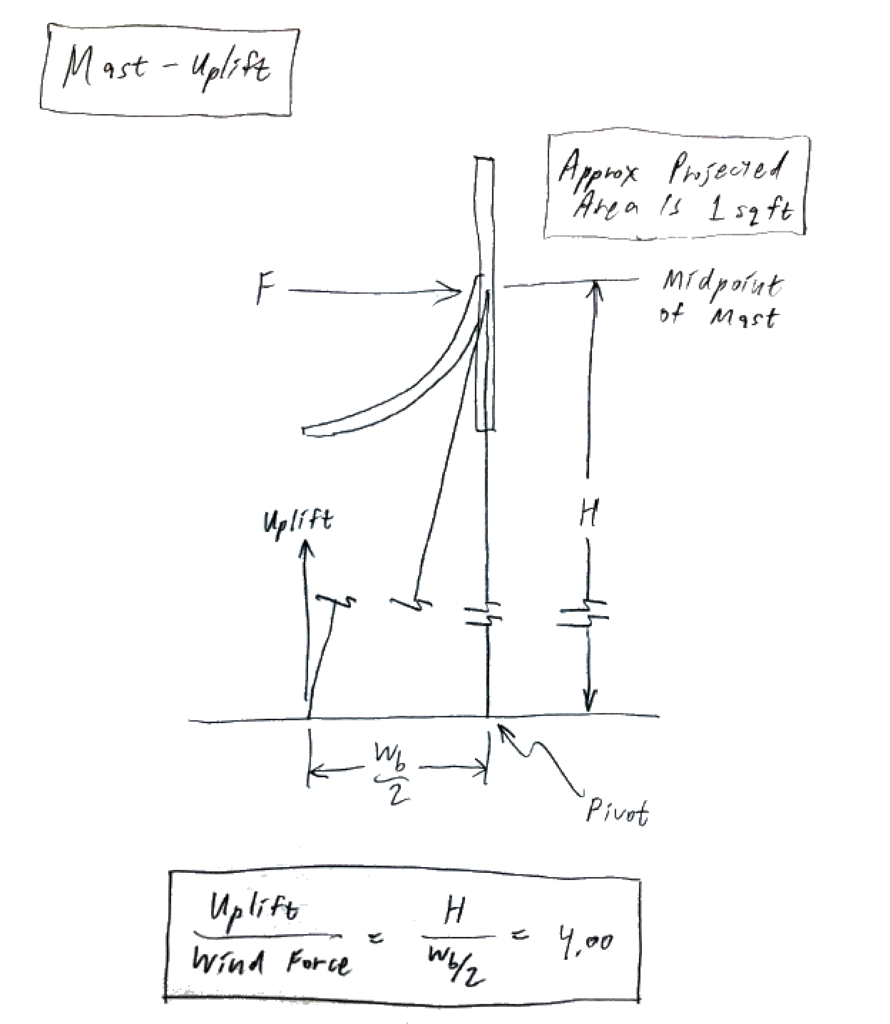
Mast Uplift
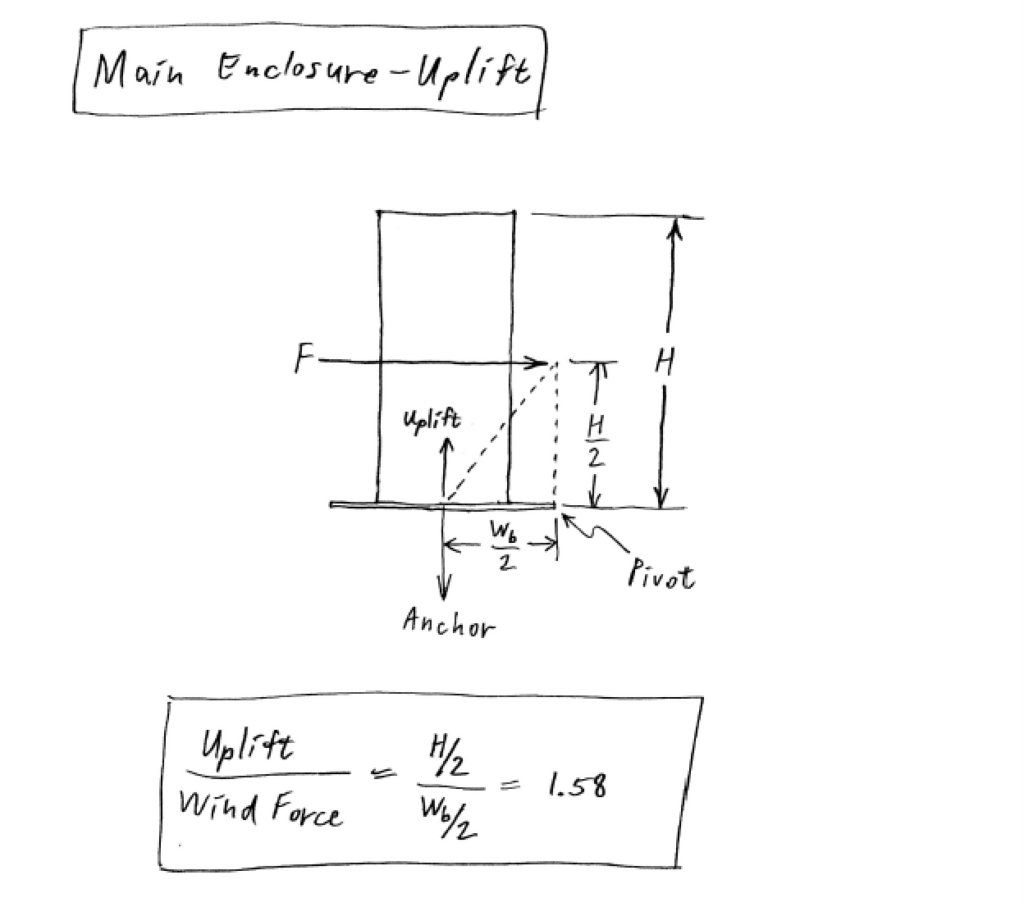
Main Enclosure Uplift
Updated May 18, 2016: I’m going to use 16-inch round-bottom woks for the rotor cups. Also, I’m going to raise the rotor to help discourage participants from trying to slap stationary cups in a calm wind. In the calculation, I used a more accurate estimate of the rotor’s coefficient of drag. The new uplift result is 1,865 pounds, which still is far less than the 3,500-pound capacity of the earth anchor. (In the calculations, “Downfacing Cup” means the cup whose round part faces into the oncoming wind; “Upfacing Cup” means the cup means the cup whose open part faces into the oncoming wind.)
